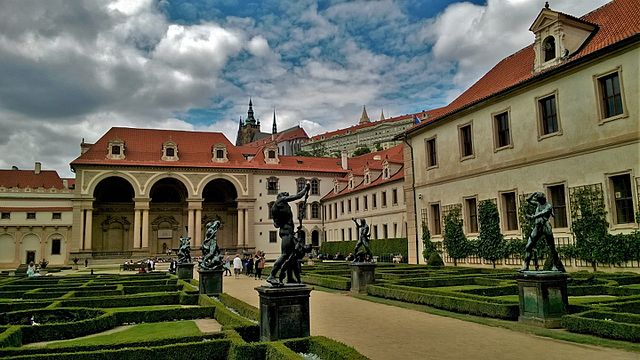Czech Baroque architecture
Czech Baroque architecture refers to the architectural period of the 17th and 18th century in Bohemia, Moravia and Silesia, which comprised the Crown of Bohemia and today constitute the Czech Republic.
Typical Baroque church in the Czech countryside (Church of St. Nicholas, Častrov).
The Matthias Gate at the Prague Castle, probably the first Baroque structure in Bohemia.
Wallenstein Palace, the first Baroque palace in Central Europe.
Facade of the Church of Our Lady Victorious completed in 1644
The Czech Republic, also known as Czechia, is a landlocked country in Central Europe. Historically known as Bohemia, it is bordered by Austria to the south, Germany to the west, Poland to the northeast, and Slovakia to the southeast. The Czech Republic has a hilly landscape that covers an area of 78,871 square kilometers (30,452 sq mi) with a mostly temperate continental and oceanic climate. The capital and largest city is Prague; other major cities and urban areas include Brno, Ostrava, Plzeň and Liberec.
Battle between Hussites and crusaders during the Hussite Wars; Jena Codex, 15th century
The 1618 Defenestration of Prague marked the beginning of the Bohemian Revolt against the Habsburgs and therefore the first phase of the Thirty Years' War.
Prague during the 1968 Warsaw Pact invasion of Czechoslovakia
Václav Havel, one of the most important figures in Czech history during the 20th century—leader of the Velvet Revolution, the last president of Czechoslovakia and the first president of the Czech Republic.








